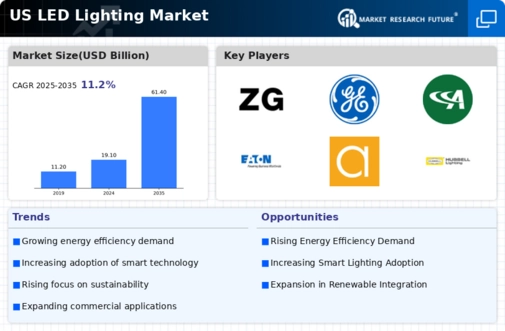The US LED Lighting Market is characterized by rapid innovation, increasing participation from a variety of companies, and a transition toward energy-efficient solutions. The market is spurred by rising awareness regarding environmental sustainability, government initiatives supporting energy-efficient technologies, and advancements in LED technology that provide superior performances and versatility. As a result, a range of companies, from large industrial players to niche startups, is fostering competition within the sector, each attempting to carve out distinct market segments with unique selling propositions.
Increased focus on smart lighting solutions and integration with IoT technologies further enhances competitive dynamics as companies vie to meet evolving consumer needs and regulatory standards for energy consumption.
Zumtobel Group stands out in the US LED Lighting Market with its well-established presence and commitment to high-quality, innovative lighting solutions that cater to a variety of sectors, including commercial, residential, and architectural applications. The company’s strong emphasis on design and functionality allows it to deliver products that are both aesthetically pleasing and energy-efficient, ensuring compliance with stringent energy regulations in the US. Known for its robust research and development capabilities, Zumtobel Group continues to advance its technology and product line, ensuring its offerings are adaptable to market changes and consumer preferences.
With strategic partnerships and collaborations, Zumtobel Group has effectively enhanced its market positioning, enabling it to leverage synergies and expand its reach within the competitive landscape of LED lighting.
General Electric, a historically significant player in the US LED Lighting Market, has developed a diverse portfolio of products that span a wide array of applications. The company focuses on providing high-performance LED lighting solutions that cater to both industrial and commercial segments, including smart lighting systems and integrated controls designed to optimize energy use. General Electric's strengths lie in its extensive brand recognition, vast distribution network, and ongoing investments in innovation, which enhances its ability to meet the evolving needs of customers.
The company has actively pursued mergers and acquisitions to bolster its capabilities in lighting technology and expand its product offerings, thereby enhancing its competitive edge. General Electric's commitment to sustainability aligns with market trends favoring energy-efficient solutions, ensuring its continued relevance and growth in the US LED lighting landscape.













